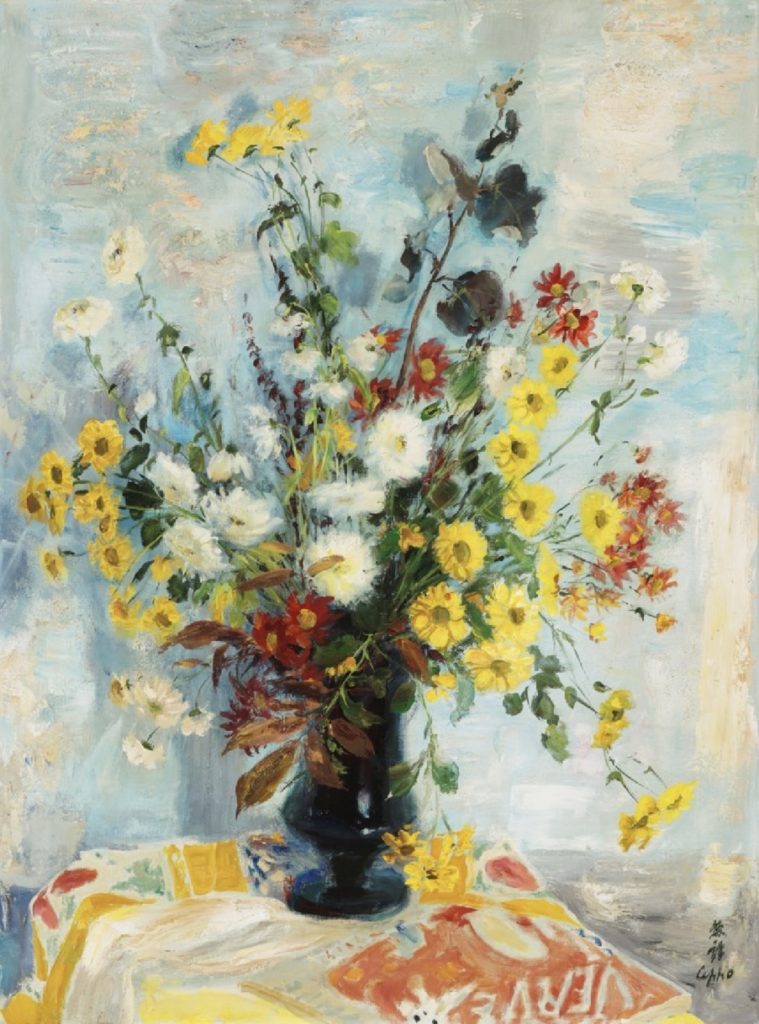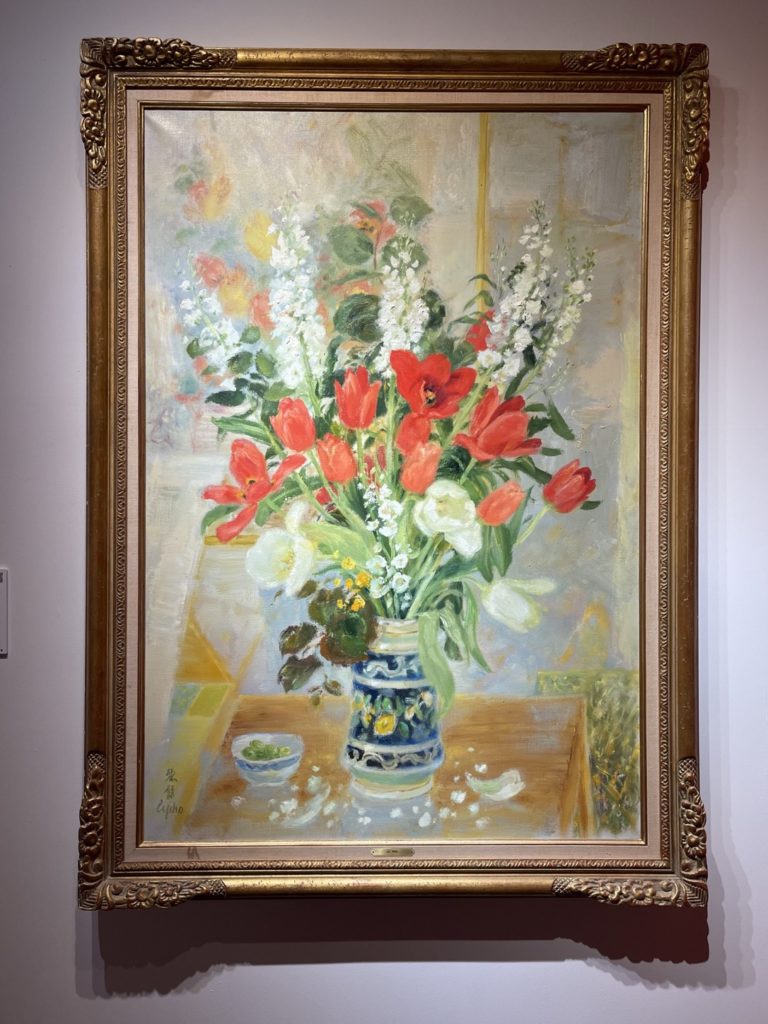Vietnamese painting at Christie’s Hong Kong, November 29th : an invigorating gentle breeze
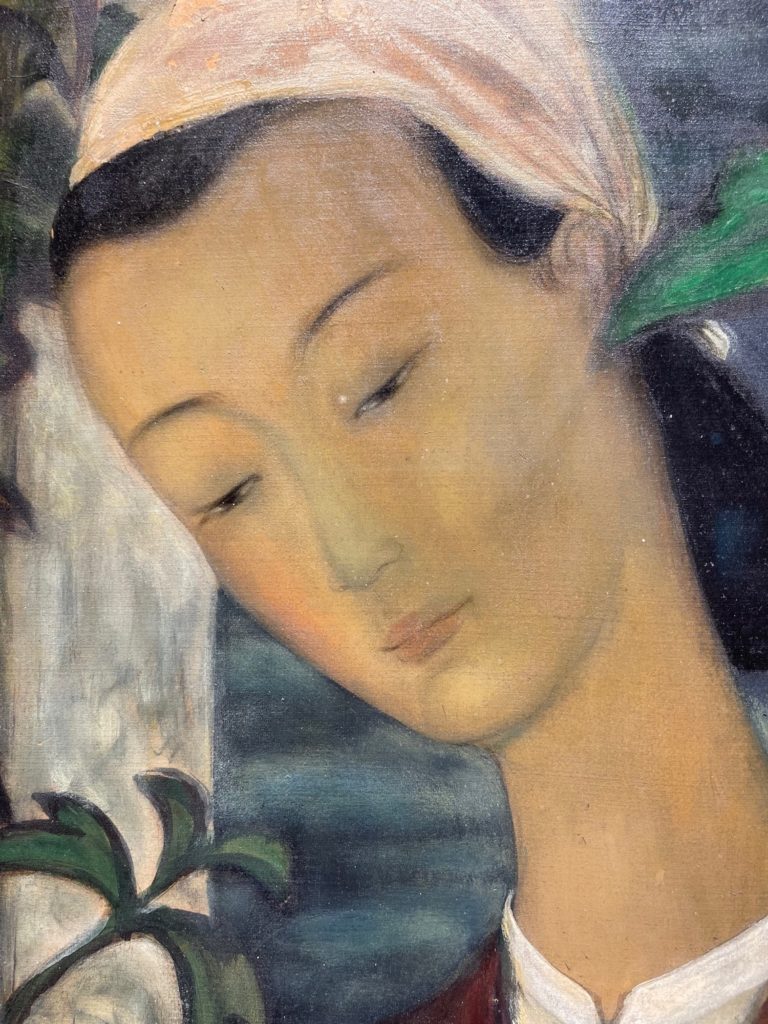
It’s been four years since I last visited Hong Kong, due to the pandemic!
It was an opportunity to revisit a city I adore – literally – and which I’ve been visiting regularly for… 39 years.
I found it dynamic, always renewing itself. Bubbling. Impressive.
Ambiguous too, when I think of Lam Cheuk-ting, Leuk Kwok-hung or Gwyneth Ho, among others…
I’m still blown away by the quality of pre-sale exhibitions at Christie’s: perfect lighting, adequate space, calm, quality of information. All elements befitting the art we take the time to admire. And the opportunity to discover and learn, in many areas, with ease.
If you happen to be in Hong Kong during a sale, don’t hesitate: access is easy and free.
A must.
Christie’s Vietnamese section was the opportunity – after the 5 Pham Hau at the Maurice Colin (1903-1995) sale, which included a portrait of Le Pho (total: €1,258,740) on June 14, in Paris – to test the market once again at the end of 2023. Even if the online sale (Hong Kong / September 23) was a success with a sublime Nguyen Gia Tri and a total of 1,877,000 HKD.
14 works presented, 13 sold at auction, 1 immediately after the sale (lot 241: Vu Cao Dam / L’homme au cheval). Without including the latter, the Vietnamese section totalled 10,804,300 Hong Kong dollars (HKD), or €1,261,150 or USD1,385,260 at exchange rates prevailing on the day of the auction.
For the rest of the text, simply multiply the prices in Hong Kong dollars by 0.12 and 0.13 to obtain – approximately – the values of the works in euros and US dollars.
Lot 238 (Mai Thu / Hairdressing), lot 239 (Luong Xuan Nhi / Peach Blossom Market) and lot 252 (Mai Thu / Mother and Children) were sold for HKD 1,008,000, HKD 819,000 and HKD 1,890,000 respectively. We can only refer you to our three special notices to get a better idea of what really appealed to our buyers.
Lot 240 (Vu Cao Dam/ Le poète) sold for HKD 378,000. Dated 1953, it is part of the artist’s early Vence period (1952-1959), which testifies to his artistic effervescence: rubbing shoulders with Chagall and Matisse, Dubuffet, Malaval among many others, the renewed study of pigments (the artist used Caparol, for example), the deconstruction of usual themes underpin this powerful work.
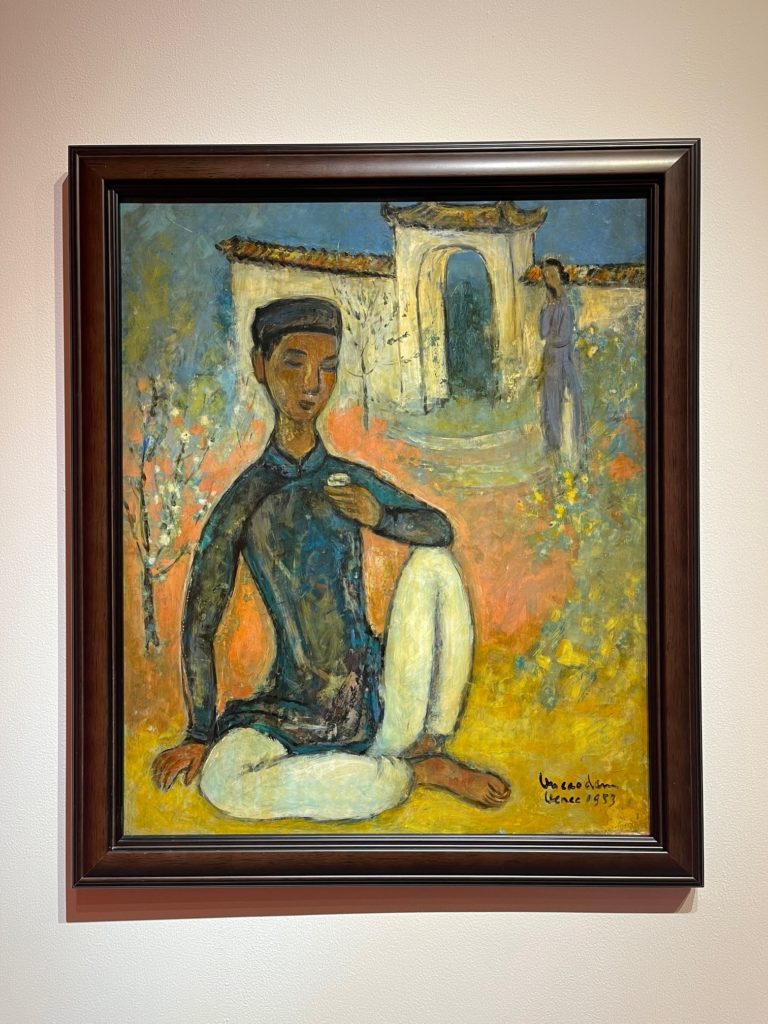
This strength is reflected in lot 257 (Vu Cao Dam/ Man on Horseback), which sold for 151,200 HKD. Painted around 1955, this is probably the artist’s last gouache and ink on silk, before moving on to oil on canvas. The horse painted here is the prototype of the model he painted from then on. The previous year, Vietnam had become independent, and this independence galvanized the patriotic Vu Cao Dam. A new energy takes hold of his work and is reflected in this horse. We can compare the new model with this 1946 painting, for example:
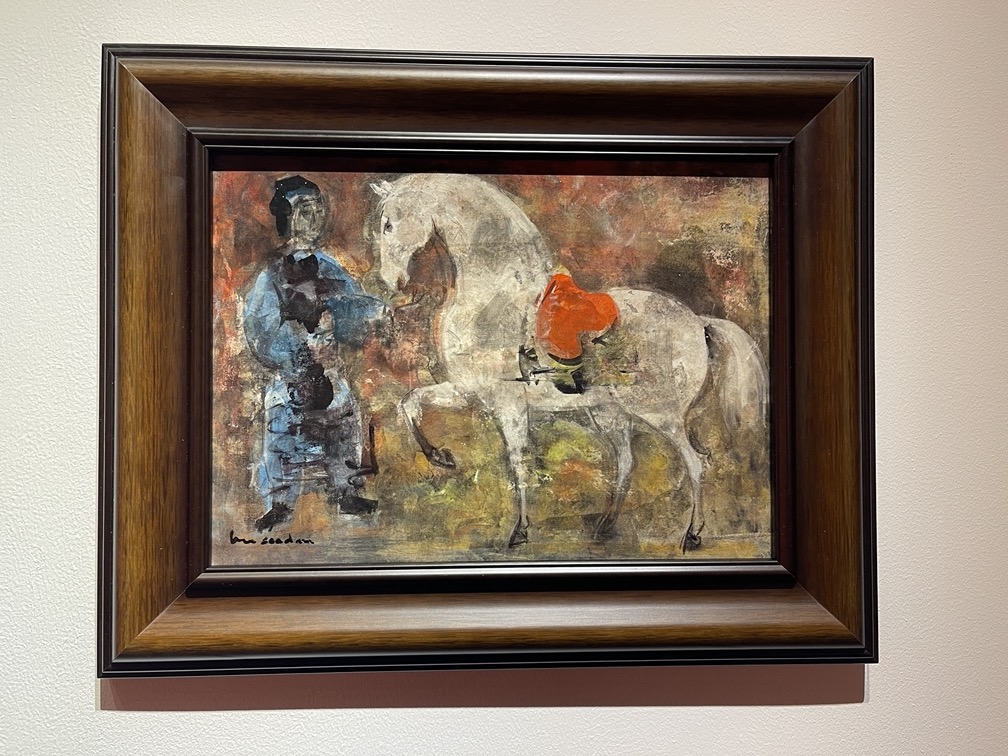
L’Homme au cheval – 1955 
L’Homme au cheval – 1946
Energy again in lot 256 (Vu Cao Dam / Maternité) sold for HKD 504,000. Painted in 1958, this strong oil on canvas proves that Vu Cao Dam had established his new style long before he signed with Wally Findlay Gallery in 1963. Also noteworthy is the frame executed by the artist, with its stylized or fanciful ideogram motifs, depending on the mood of the observer… The following year, Vu Cao Dam moved to Saint-Paul de Vence.
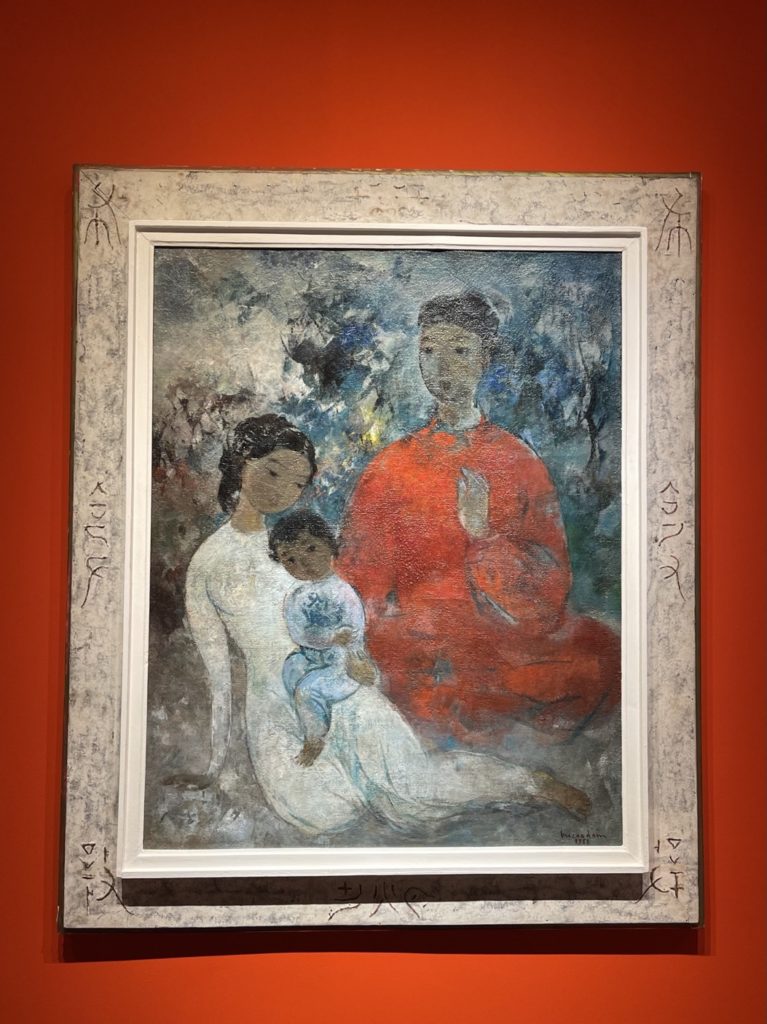
Lot 254 (Vu Cao Dam / Buste de femme), which sold for HKD 403,000, bears witness to an artist (in France for the past 4 years) who claims to be Asian here, circa 1935: no romanized letters, an Asian stamp indecipherable to virtually all ordinary observers. Not anonymity, but essentialization – which will remain exceptional in this classic work, if ever there was one, for its subject and technique.
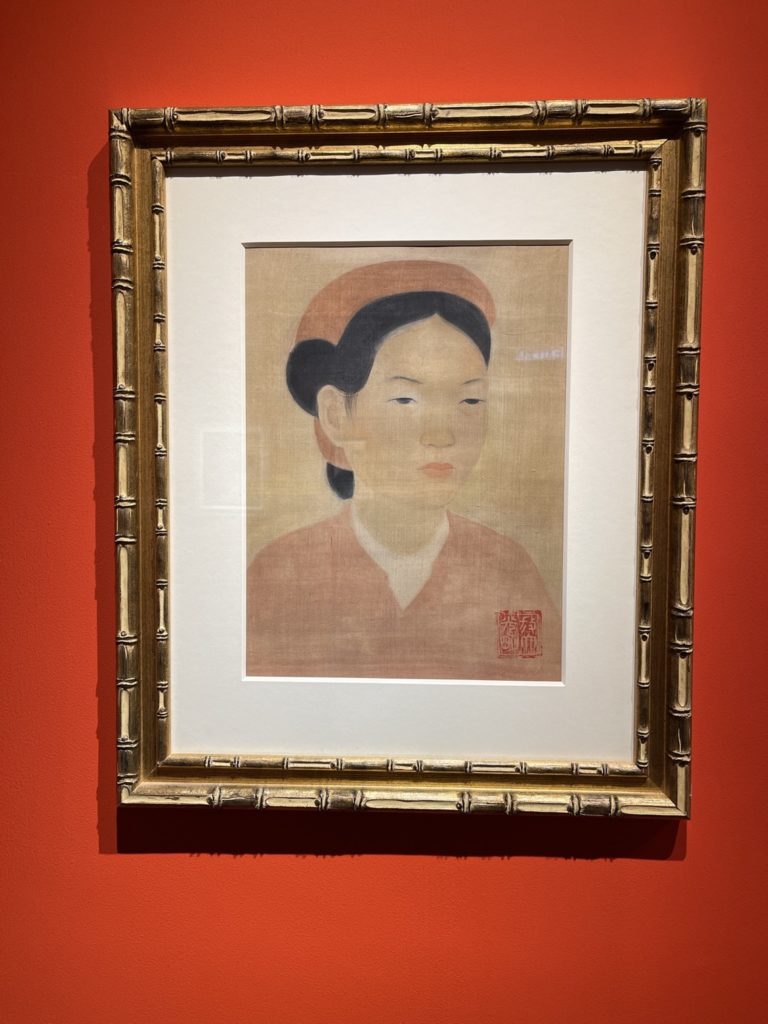
Inverted essentialization for Le Pho, in lot 255 (Le Pho / La femme au foulard blanc) sold for HKD 1,134,000. Here, the artist omits the two Chinese characters of her name, in favor of a romanized spelling. An almost universal white turban, like the clothes, a wall, a background, neutral vegetation, dark tones. A date (which is very rare for Le Pho), “1940”, the year of all dangers and the defeat of the French army (Le Pho volunteered and moblised there from September 1939 to July 1940). The painter had not yet met Matisse (he would do so in 1943), who advised him to add more color to his works. The only concession is the Asian face. Note the elongated neck, characteristic of the period.
A very classy work, offered without “reserve”, which won over its public.
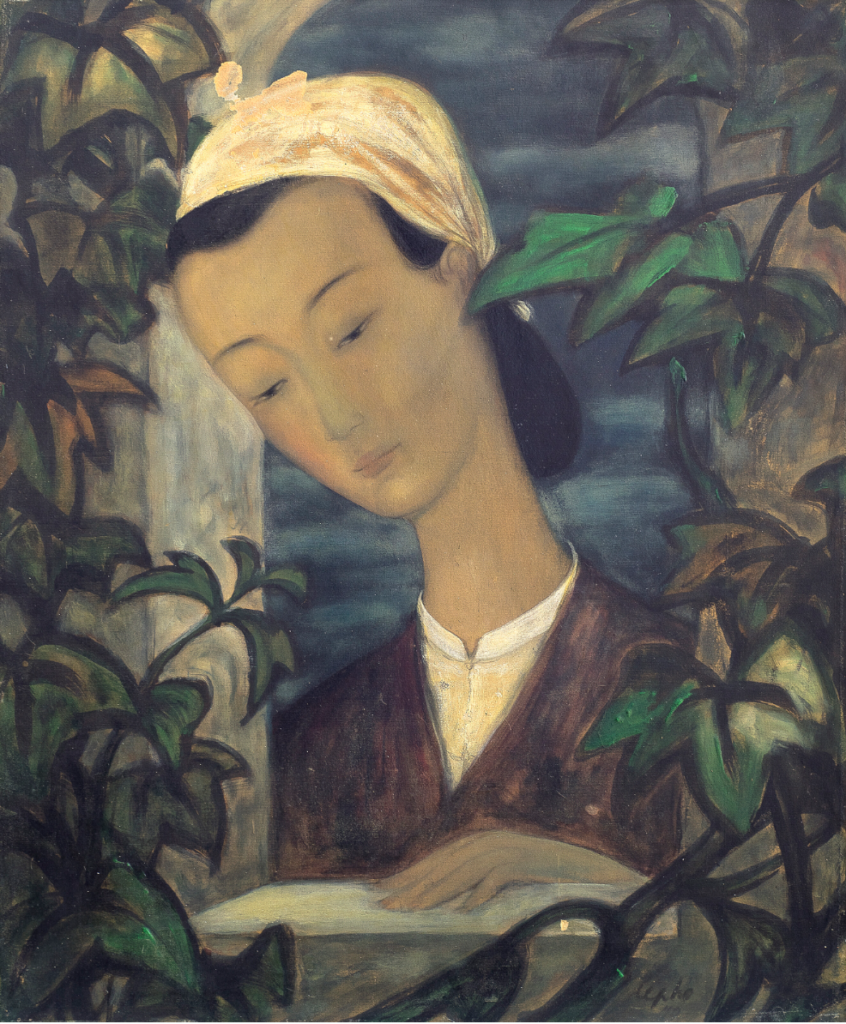
Lot 258 (Le Pho / La promenade) was painted in the early ’50s, when the painter was facing a more difficult period, both mentally and socially: After the war, economic conditions in France waned, art lovers became fewer and fewer, and the painter found less of an audience. Here, he illustrates, almost spiritually and graphically, a temporary return to his native land. We can make out a buffalo, a woman and a child. Blurred, melting into the vegetation. Two inky-black heads of hair, the rest radiating color. Color prevails over line. Matisse, whom we met in 1943, told Le Pho: “Put more color in your work”. His advice was heeded. Sold for HKD 302,400.
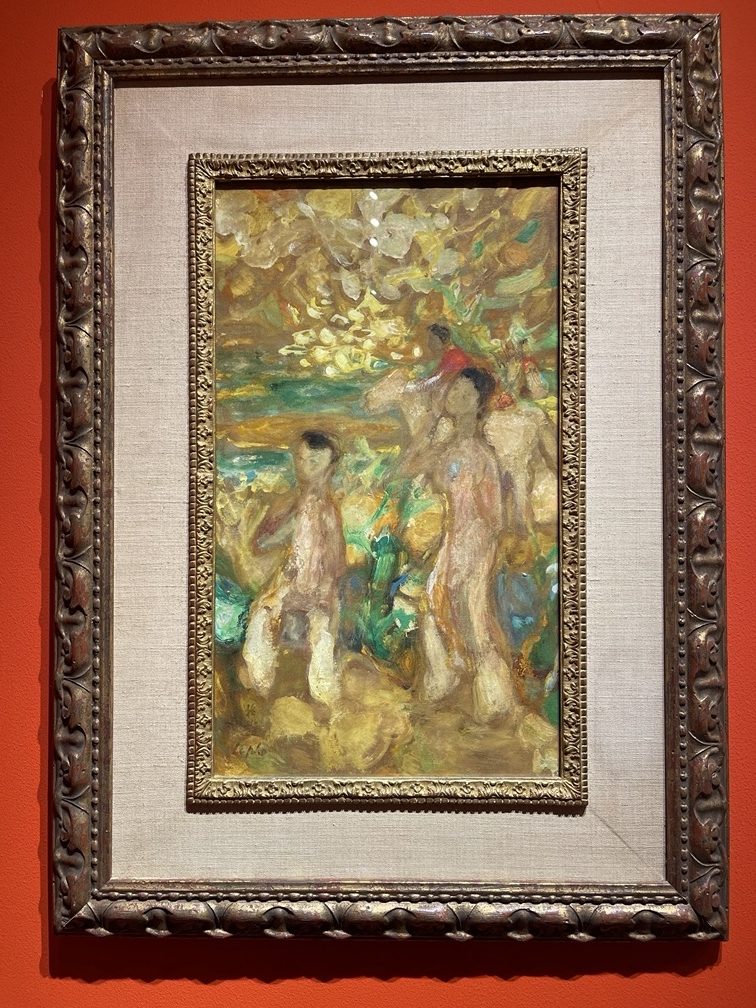
Lots 242 and 243, (Le Pho / Les chrysanthèmes blancs et jaunes and Le Pho / Les Tulipes) both painted in the 1970s, sold for HKD 882,000 and HKD 819,000 respectively. With Le Pho, we always identify at least one quotation, if not a hidden meaning. Here, in “Les chrysanthèmes blancs et jaunes”, we see the cover of “VERVE“. A particularly fine magazine, created in Paris by the artist Tériade (1897-1983) and published from 1937 to 1960. Here we identify issue no. 3, “L’Orient”, 2nd quarter 1938, with the cover by Bonnard (reproduced below), one of the masters claimed (along with Matisse) by Le Pho. This year, 1938, was the first year of the painter’s definitive installation in France. A fine reminiscence…
Lot 253 (Nam Son / L’aveugle) dated 1938 fetched HKD 119,700. Nam Son is obviously not the “co-founder, with Victor Tardieu, of the Hanoi School of Fine Arts”, as the simpletons write and repeat, again and again. The assertion is an old one, dating back to 1937, and was propagated on the sly on page 17 of the brochure (contradicting page 10 of the same brochure…) “Les Écoles d’Art de l’Indochine” published by the General Government of Indochina. Nothing more than pettiness in the spirit of the Front Populaire and an affront to Victor Tardieu (who died on June 12, 1937…). Of course, it was taken up again in Vietnam, because sometimes you have to stick to an ideology… Nam Son deserves better than these unhealthy manipulations. He was an extraordinary teacher and a fine artist, full of sensitivity, as our powerful work testifies. Every collector of this name must bear witness to this in his collection.
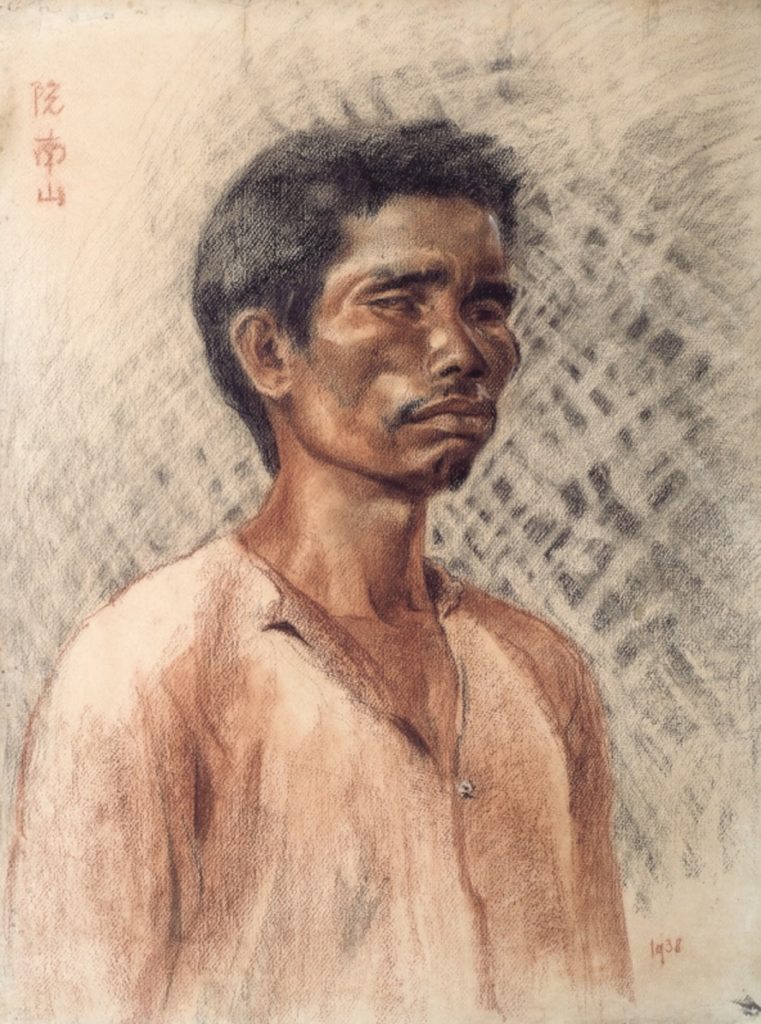
Lot 237 (Mai Thu/Contes et légendes) sold for HKD 2,394,000. Note the “8” (auspicious number) children and the presence of “a” female storyteller: all the attentive attitudes of childhood are particularly well represented here, through the pure, lively faces that only Mai Thu knows how to capture. The landscape in the background is more phantasmagorical than usual. In 1964, Mai Thu lulls us into a gentle Confucian mood. The Vietnam War would begin… the following year.
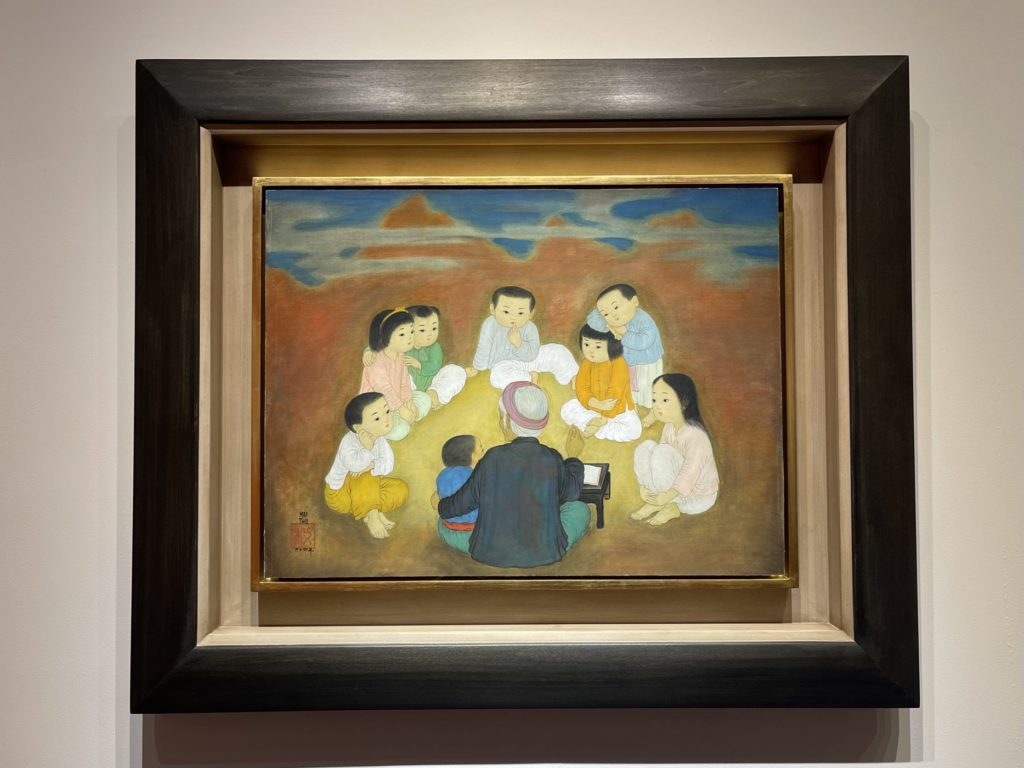
All these works were acquired by a public which, after having exchanged a great deal during the exhibition, proved enthusiastic in the hall, on the Internet, by written order or on the telephone, in an atmosphere suffused with serenity.
A gentle, invigorating breeze. Salutary…
Jean-François Hubert
